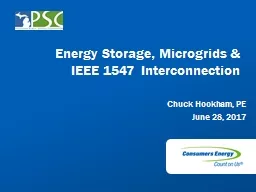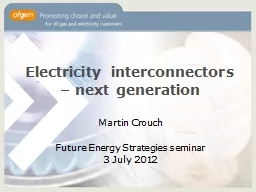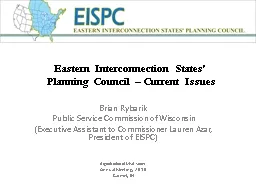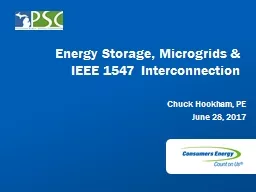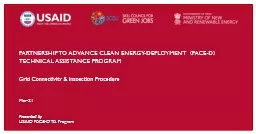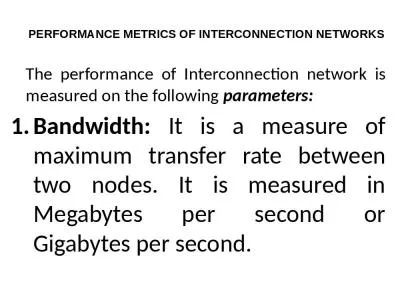PPT-Energy Storage, Microgrids & IEEE 1547 Interconnection
Author : debby-jeon | Published Date : 2018-01-17
Chuck Hookham PE June 28 2017 Demand for electricity eg light bulb motor requires an operating generator and wires Oneway Grid power flow very limited storage
Presentation Embed Code
Download Presentation
Download Presentation The PPT/PDF document "Energy Storage, Microgrids & IEEE 15..." is the property of its rightful owner. Permission is granted to download and print the materials on this website for personal, non-commercial use only, and to display it on your personal computer provided you do not modify the materials and that you retain all copyright notices contained in the materials. By downloading content from our website, you accept the terms of this agreement.
Energy Storage, Microgrids & IEEE 1547 Interconnection: Transcript
Download Rules Of Document
"Energy Storage, Microgrids & IEEE 1547 Interconnection"The content belongs to its owner. You may download and print it for personal use, without modification, and keep all copyright notices. By downloading, you agree to these terms.
Related Documents

